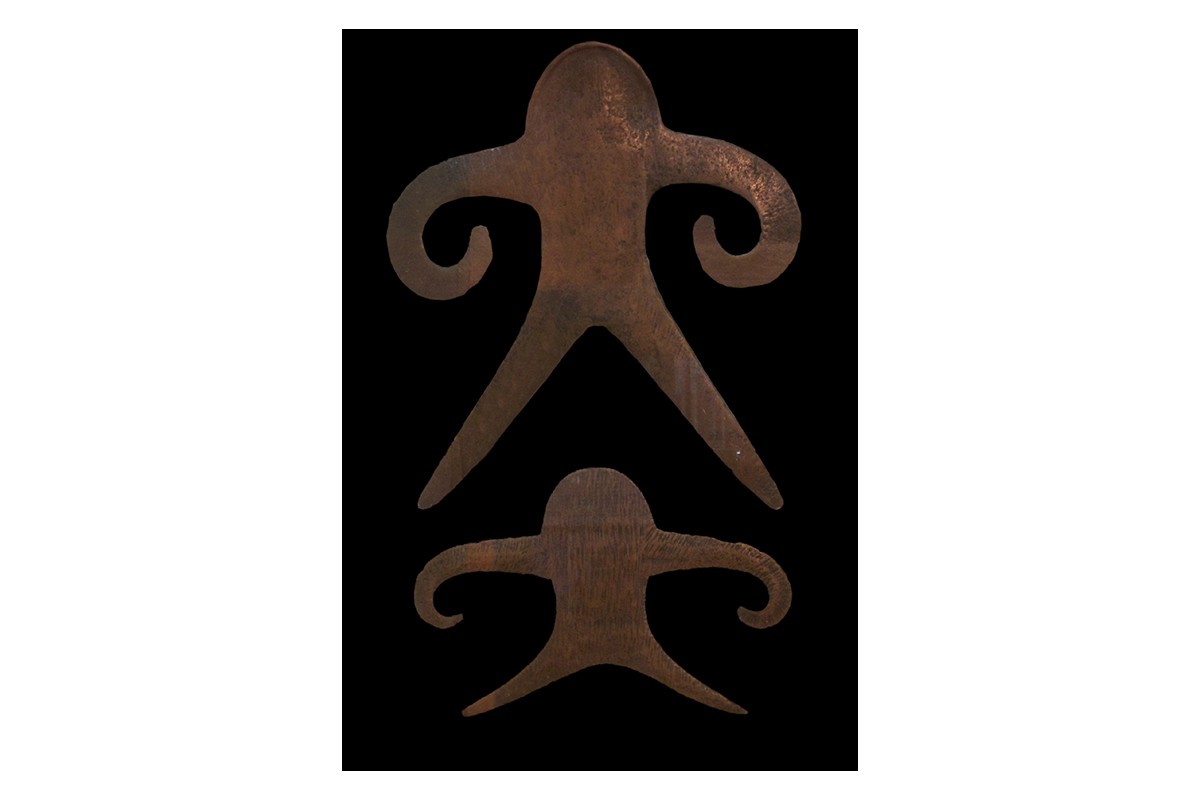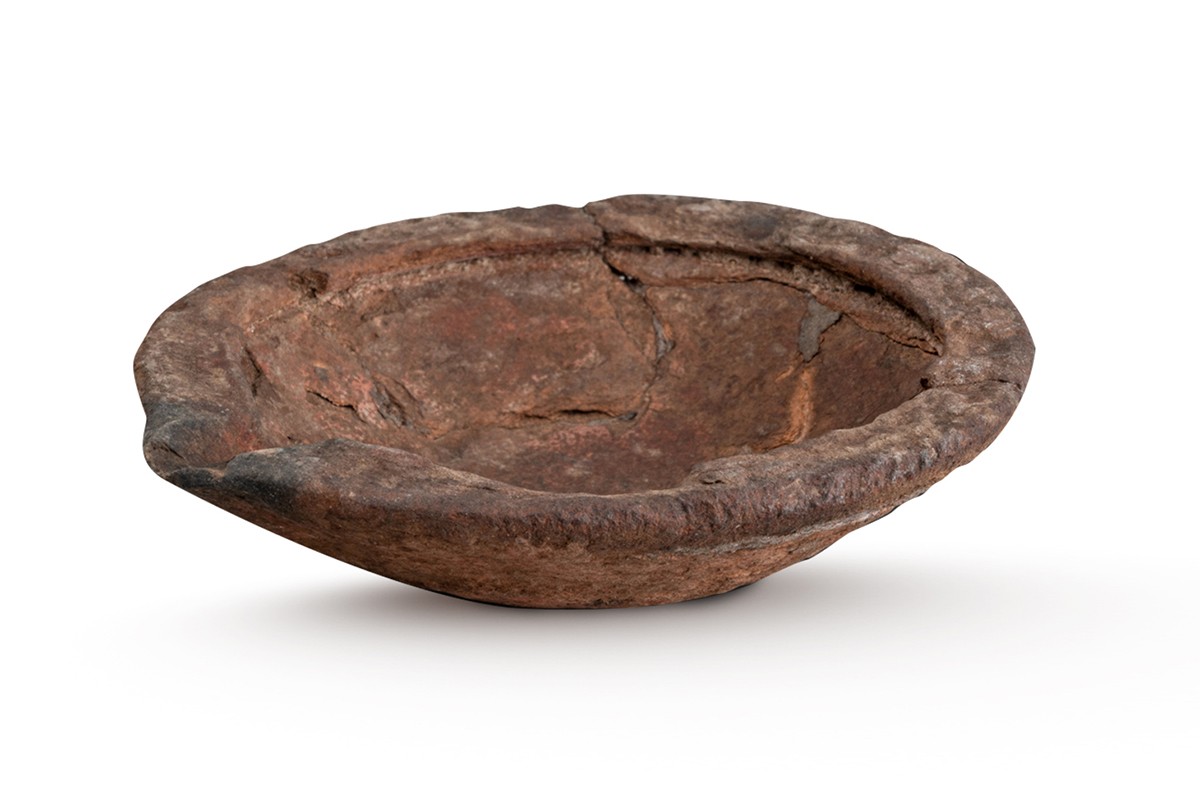The Late Bronze Age
1900–1300 BCE
Regional settlements and networks become the norm, exemplified by Late Harappan settlements such as the Cemetery H culture in present-day Punjab, Haryana and Western Uttar Pradesh in India; the Jhukar culture in Sindh (present-day Pakistan); and the Rangpur culture in present-day Gujarat, India. Pottery shapes related to the Mature Harappan phase continue to be produced, including the s-shaped, pear-shaped and perforated jars, goblets and utensils. Circular seals made of steatite are also made. There is a continuity in decorating pottery designs using faience, featuring human figures and animals such as bulls and peacocks, as well as solid disc-wheel carts, which are found in the Sinauli site along the Ganga-Yamuna doab (the flat fertile land between two rivers) in present-day western Uttar Pradesh. Interactions with and migrations from Central Asia influence departures from Harappan cultural norms, such as at Sinauli, where chariots are used for war and dead elites are buried.
Bibliography
Kenoyer, Jonathan Mark. “The Indus Valley Tradition of Pakistan and Western India.” Journal of World Prehistory 5, no. 4 (1991): 1–64.
Mughal, Rafiq M. “The Decline of the Indus Civilization and the Late Harappan Period in the Indus Valley.” Lahore Museum Bulletin 3, no.2 (July-December 1990): 1–17.
Kenoyer, Jonathan Mark. “The Indus Valley tradition of Pakistan and Western India”, Journal of World Prehistory , vol. 5, no. 4 (1991): 1–64.
Mughal, Rafiq M. “The Decline of the Indus Civilization and the Late Harappan Period in the Indus Valley.” Lahore Museum Bulletin , vol.3, no.2 (July-December 1990): 1-17.
Feedback 
This entry appears in
Art in South Asia
Visit Timeline
Associated Timeline Events
First Published: March 11, 2024
Last Updated: July 2, 2024








